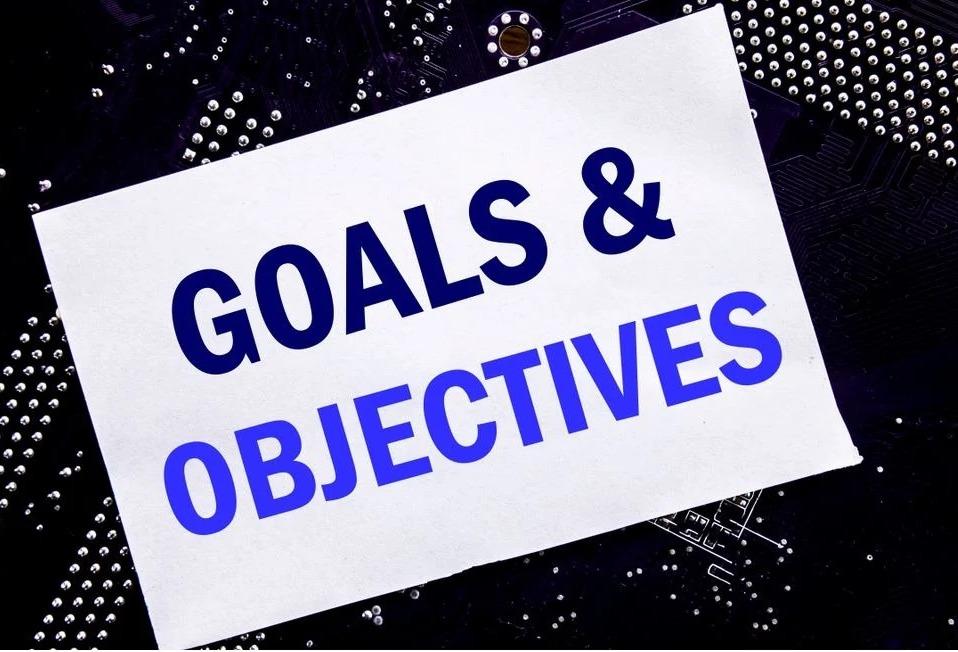When leading a team, defining goals and objectives helps you achieve the desired results. From big business goals to small daily objectives, these methods will help your team stand out from the competition.
While goals and objectives are important, there are some differences between the two when it comes to the specific actions you need to take. It is very important to understand how to incorporate them into your portfolio of projects to achieve great results.
In this article, we will analyze the main differences between goals and objectives, their specific techniques and we will explain how to incorporate them into your daily routine.
We need to make our goals smarter and more refined to boost our productivity. Please check the relevant productivity masterclass and teamwork and leadership masterclass. You don’t have to pay the full amount. Just send an email to info@keytostudy.com and ask for a big discount. We promise you’ll be happy with it!
What is a goal?
Let’s see individually, what a goal is. We can define a goal as a long-term aspiration, which may be more difficult to achieve and which requires a longer planning process and probably in several phases. Although the idea is to set a goal that is achievable, usually when we talk about goals we are also talking about larger achievements.
What is an objective?
Now that you know what a goal is, the next point is to understand what an objective is. The objectives are the ends that we want to achieve in the short or medium term and for these to fulfill their function they must have a deadline and be realistic and achievable objectives. The objectives that we define must be consistent and be directed towards the same focus: to achieve the proposed goal or the general objective.
Goals and objectives: what are the main differences?
The main difference between goals and objectives is that a goal is an overall long-term result that you want to achieve, while an objective defines measurable short-term actions to achieve the overall goal.
Another of the main differences between goals and objectives is that the objectives tend to be more structured. They need structure to be able to carry out. While we could say that the goals are achieved thanks to those well-structured and planned objectives. Likewise, goals do not necessarily require a deadline, although it is good to indicate a specific date even if it is long term. However, the difference here between goals and objectives is that objectives imply specific dates.
Although they are different, goals and objectives are often used simultaneously when working on a given project since both are essential to the planning and execution of the project. On many occasions, you will also read or hear about general objectives and specific objectives. The general objective is more similar to what a goal would be. In any case, both goals and objectives allow you to create measurable steps to achieve the desired result. These include key performance indicators (KPIs), objectives and key results (OKRs), or any other detailed results you want to achieve.
Types of goals
There are three main types of goals: time-limited, result-oriented, and process-oriented.
Each type has its own priorities and leads to a different end result. In some cases, the goal may incorporate all three types, such as in process updates with tight deadlines.
Regardless of the type of goal you set, always make sure it’s SMART. SMART is an acronym that stands for specific, measurable, achievable, realistic, and time-limited. These characteristics help create definite and achievable goals.
Time limited goals
Goals of limited duration focus on establishing defined actions with deadlines and expected dates. They also provide detailed information on how the team should strive to achieve the desired results.
To be time limited, a goal must be connected to a specific timeline; usually with concrete long-term deadlines, which are linked to a business plan. These types of goals allow teams to take urgent, high-priority actions.
Ideal for: Teams that need to achieve a specific result within a certain period of time.
Results Oriented Goals
Results-oriented goals focus on the end result. Instead of focusing on specific deadlines, results-oriented goals seek to achieve action above all else.
In this type of goal, the deadlines can be postponed if necessary in order to achieve the desired result with the expected quality. They are commonly used for large-scale actions and important business milestones, such as growth targets or resource allocation plans.
Ideal for: Teams that need to achieve a specific result and can adjust timelines as needed.
Process-oriented goals
These goals are aimed at creating new internal systems and processes. Instead of focusing on a specific result, they prioritize the work and the actions that are taken to achieve it.
These goals help improve team efficiency as they allow for the most effective processes possible.
Ideal for: Teams looking to implement new processes internally to increase efficiency.
Types of objectives
There are three main types of goals, each with their unique perspectives on working on tasks. Whatever the type of objectives, they must all be clear and achievable objectives.
Strategic objectives, tactical objectives, and operational objectives play a key role in achieving the broader goals. Let’s see how each of these goals can fit into your plan.
Strategic objectives
Strategic objectives are geared towards a specific purpose and help develop the overall vision of a project.
Teams use strategic objectives to align deliverables with broader business goals. These objectives ensure that team members have a clear direction for the project and are aligned with the purpose of the project and the overall schedule.
Ideal for: Teams that work to connect their objectives with the goals of the business.
Tactical objectives
Tactical objectives focus on short-term deliverables and the outcome of that work.
This type of goal looks at short-term task results and long-term goals to make future decisions.
Ideal for: Teams working on complex projects with many short-term deliverables.
Operational objectives
Operational objectives are similar to tactical objectives in that both are short-term. The difference is that they focus on action-oriented and achievable tasks related to operational objectives.
Operational objectives contribute to daily, weekly and monthly goals by planning task schedules and coordinating between different departments.
Ideal for: Large teams who work best in short iterations and prefer detailed instructions.
How to write a goal and an objective?
Both your goals and your objectives should be based on your company mission and vision. Writing the vision of your company will help you focus on what you want to achieve. This is the most aspirational part of what you want to achieve. The vision of a company must be somewhat idealistic and difficult to achieve.
The next step to write your goals and objectives will stop writing the goal. If it is the company goal, it will be different from the brand goal or an efficiency goal, so it is also important that you know how to distinguish between the different types of goals. Remember that the goal must be long-term and general.
Lastly, define your goals. You are now closer to having your goals and objectives perfectly written. Set realistic and achievable goals and in a short period of time.
Examples of goals and objectives
Since goals and objectives are similar, it may be helpful to look at some concrete examples. From growth goals to measurable objectives, there are many scenarios in which you will need to set goals and objectives.
When it comes to long-term plans, the most important goals need to align with the organization’s mission statement and corporate values. Although these goals are general initiatives that take place over many months or even years, they must be measurable and concrete, according to the SMART framework. Objectives, on the other hand, are specific actions that your team will carry out in a shorter period of time. A goal is made up of many objectives.
Here are three sample goals and sample objectives to help you better understand how they are interrelated even though they are very different.
Example 1: Brand Goal
In this example, we will look at a goal and objectives in which milestones are used.
Goal: Launch a new product or service on the market in the next three months that benefits local businesses and that is aligned with the pillars of our brand in the community.
Objective: Kim will begin a search for local products based on the results of the customer survey.
The goal and objective in this example follow the guidelines of the SMART framework and have specific and measurable KPIs.
Example 2: Growth goal
In this example, we’ll look at a growth goal with specific KPIs.
Goal: Increase the conversion rate of the blog by 10% in the month of December.
Objective: Implement an email marketing campaign to promote our new products with a 15% discount for the month of December.
By including specific project deliverables and expected results, both the goal and the objective are easier to understand. You can also easily visualize how both relate to a larger business goal.
Example 3: Efficiency goal
In this example, we will see a goal and objective focused on improving the efficiency of the company.
Goal: Reduce errors in the manual onboarding process by 30% in Q4.
Objective: Implement business process automation by the end of Q3 to reduce workflow errors in Q4.
Measurable objectives must be included, and long-term goals must be properly defined and planned.
How to measure goals and objectives
Measuring goals and objectives doesn’t have to be complicated. When you set your goals, make sure they include specific metrics that you can easily measure at any point in the process.
When looking to measure goals and objectives at work, it is important to be able to measure these key components:
- Analyze data points: Data usage is a great way to measure whether KPIs are being met. Look at the most relevant performance metrics, such as conversion rate, traffic value and new users. You can also include certain business leaders and managers in the conversation to ensure transparent communication.
- Measure past performance: In addition to the data, analyze past performance to see if there were improvements. This is particularly important if your team is working on a process-oriented goal that aims to improve efficiency by upgrading or adding new internal systems.
- Follow a structure: Plans and structures help keep information organized and tasks on track. Structures can include things as simple as weekly team meetings or as comprehensive as a work breakdown structure detailing individual tasks and dependencies.
Both goals and objectives are essential to achieving new business results. One can’t exist without the other, which makes it so important that you can implement them correctly in your team.
From the broadest goals to the most specific objectives, with the right strategy, your team can reach a higher level.

